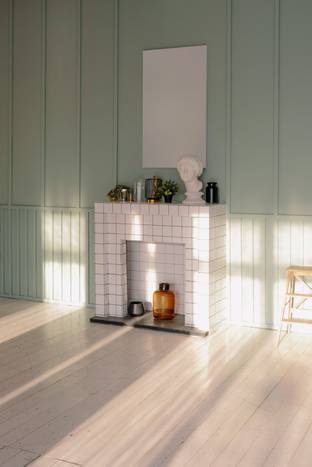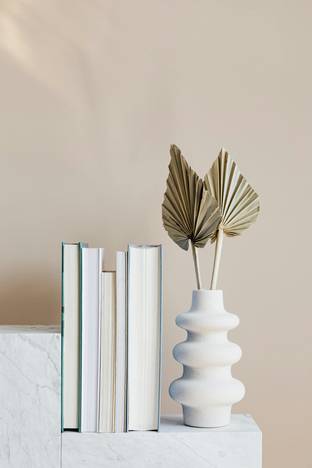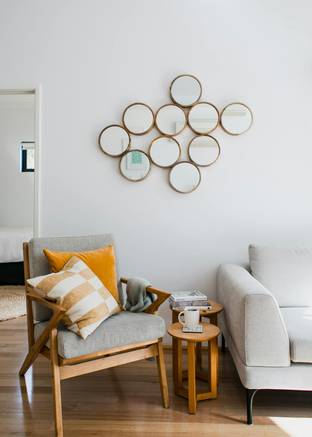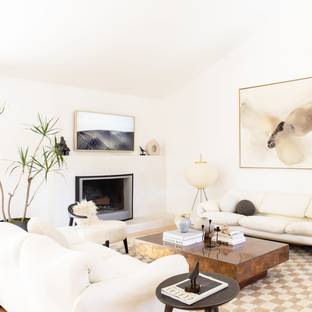Colors are more than just visual stimuli; they possess the power to evoke emotions, influence moods, and even shape our perceptions.
From the calming embrace of cool blues to the energizing spark of warm reds, let's delve into the captivating realm of color psychology and understand how colors create different emotions.
Our brains are hardwired to perceive and interpret colors, and each color carries its unique psychological associations and symbolism. Understanding these connections can help us harness the power of colors in various aspects of our lives, from interior design to marketing and even personal well-being.
As we immerse ourselves in a world filled with vibrant hues, it's fascinating to explore how different colors impact our feelings and reactions.
Exploring the Emotional Spectrum
Calming Greens
Green, the color of nature, is linked to growth, harmony, and balance. It promotes a sense of tranquility and renewal, making it suitable for spaces where relaxation and healing are essential.
Grounding Earth Tones
Colors such as browns and earthy tones are associated with stability, reliability, and a connection to the natural world. They can create a sense of comfort and reassurance.
Soothing Purples
Purple, often associated with royalty, has calming and soothing effects. It can represent luxury, creativity, and spirituality, making it a popular choice for beauty and wellness industries.
Energetic Oranges
Orange combines the vibrancy of red with the cheerfulness of yellow. It is known to elicit enthusiasm, warmth, and excitement, making it an excellent choice for social spaces.
Serene Blues
The color of the sky and sea, blue is often associated with tranquility, calmness, and stability. It is known to reduce stress and promote a sense of relaxation, making it an excellent choice for bedrooms, meditation spaces, or places where peace and focus are essential.
Vibrant Reds
As a color of passion and energy, red is known to evoke strong emotions. It can symbolize love, excitement, and even danger. Red has the ability to increase heart rate and adrenaline, which is why it's often used in marketing to catch attention and stimulate appetite.
Uplifting Yellows
Reminiscent of the sun and associated with feelings of joy, happiness, and optimism, yellow can stimulate mental activity and creativity, making it an excellent choice for workspaces or places where inspiration is needed.
Harnessing Colors in Everyday Life
Home Decor
Understanding the emotional impact of colors can help us create harmonious and mood-enhancing living spaces. Whether it's choosing soft blues for a calming bedroom or invigorating oranges for a lively dining area, colors can influence how we feel within our homes.
Marketing and Branding
Businesses use color psychology to evoke specific emotions and associations in their consumers. Fast-food chains often use red and yellow to stimulate appetite, while luxury brands frequently opt for black and gold to signify sophistication and exclusivity.
Personal Well-being
Incorporating certain colors into our clothing or surroundings can influence our emotions positively. For instance, wearing calming colors during stressful situations or surrounding ourselves with vibrant hues when we need motivation can have a subtle but noticeable impact on our mood.
Colors are a powerful language that can speak directly to our emotions, shaping how we experience the world around us. From the peaceful blues that transport us to serene shores to the energetic reds that ignite our passions, each color carries a unique emotional journey. Understanding color psychology allows us to harness this potential, creating spaces and experiences that enrich our lives and uplift our spirits. So, the next time you find yourself surrounded by colors, take a moment to explore the emotions they evoke and appreciate the magnificent symphony of hues that colors paint in our lives.
The next time you find yourself surrounded by colors, take a moment to explore the emotions they evoke and appreciate the magnificent symphony of hues that colors paint in our lives.














